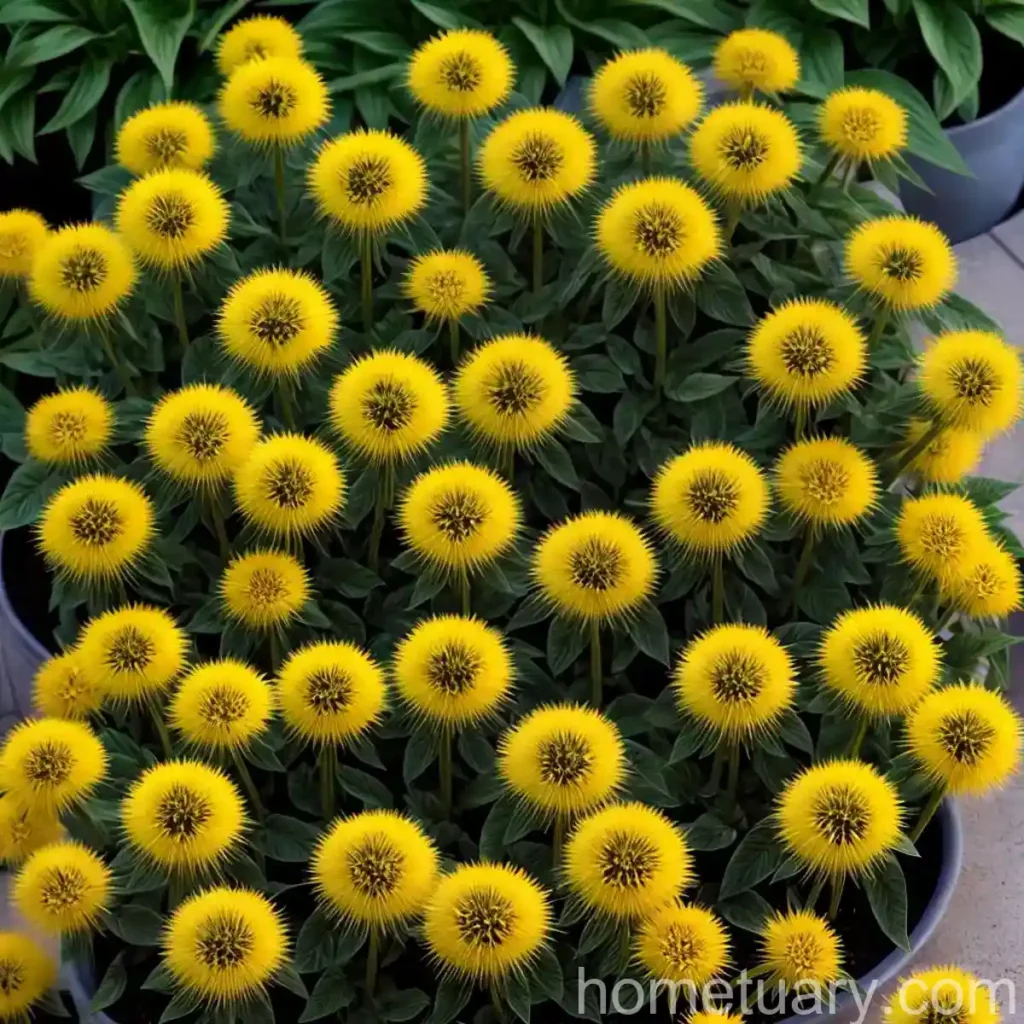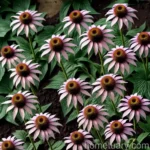Leopard’s Bane (Doronicum ‘Little Leo’): A Complete Guide
Plants have a remarkable ability to add beauty, color, and life to any space, whether it’s a backyard garden, a city park, or an indoor environment. As a plant scientist, I’ve always been fascinated by the diverse range of plant species and how they thrive in various environments. In this comprehensive guide, we’ll delve into the captivating world of Leopard’s Bane (Doronicum ‘Little Leo’).
What is Leopard’s Bane (Doronicum ‘Little Leo’)?
Leopard’s Bane (Doronicum ‘Little Leo’) is a perennial plant that belongs to the Asteraceae family. Known for its striking yellow flowers and exceptional ornamental value, this plant has gained popularity among gardening enthusiasts. Its botanical name, Doronicum, is derived from the Greek word Doron, which means “a gift,” underscoring the plant’s appeal as a valuable addition to gardens and landscapes.
Key Takeaways – Leopard’s Bane (Doronicum ‘Little Leo’)
- Botanical Name: Doronicum ‘Little Leo’
- Family: Asteraceae
- Common Names: Leopard’s Bane, Little Leo
- Type: Perennial
- Flower Color: Yellow
- Native Habitat: Central and Southern Europe
- USDA Hardiness Zones: 4-8
Now, let’s explore the specific aspects of cultivating and caring for Leopard’s Bane, from its cultural requirements and uses to propagation and potential challenges.
Culture
Understanding the cultural needs of Leopard’s Bane is crucial for ensuring its optimal growth and overall well-being. The following aspects encompass its cultural requirements:
Water
- Moderate Watering: Leopard’s Bane generally prefers consistently moist soil, especially during the growing season. It’s important to avoid overwatering, as excessively wet conditions can lead to root rot.
- Well-Draining Soil: Ensuring that the soil has good drainage facilitates the appropriate uptake of water while preventing waterlogged conditions around the plant’s roots.
Sunlight
- Partial to Full Sun: Leopard’s Bane thrives in locations with partial to full sunlight exposure. It benefits from receiving at least 6 hours of sunlight per day, promoting robust flowering and overall vigor.
Fertilizer
- Balanced Fertilization: Providing a balanced fertilizer, formulated for flowering perennials, can support the plant’s growth and bloom production. It’s advisable to apply fertilizer in early spring and follow the manufacturer’s recommended application rates.
Soil
- Rich, Moist Soil: Leopard’s Bane favors rich, well-amended soil that retains moisture without becoming waterlogged. Incorporating organic matter into the soil can enhance its nutrient content and structure, promoting healthy growth.
Pruning
- Post-Blooming Pruning: After the plant’s flowering period, deadheading spent blooms and trimming back any straggly growth can encourage a tidy appearance and potentially stimulate a second flush of flowers.
Propagation
The propagation of Leopard’s Bane can be achieved through several methods, allowing for the expansion of plantings and the cultivation of new specimens. The following techniques are commonly used for propagating this perennial:
-
Division: Dividing the plant’s clumps in early spring or fall presents an effective means of propagation. This entails carefully separating the root systems and replanting the divisions in suitable locations.
-
Seed Propagation: Collecting seeds from mature Leopard’s Bane plants and sowing them in prepared soil can lead to the emergence of new seedlings. It’s essential to provide adequate moisture and favorable growing conditions for the successful germination of seeds.
Container Popularity
The compact and charming nature of Doronicum ‘Little Leo’ makes it well-suited for container gardening, offering versatility in its display and cultivation. From patio planters to balcony gardens, this perennial can thrive in containerized environments, adding an inviting touch of yellow blooms to confined spaces.
Container
-
Size and Depth: Selecting a container with sufficient depth and diameter to accommodate the plant’s root system is crucial for its growth and stability. A container with drainage holes promotes proper water drainage and aeration.
-
Quality Potting Mix: Using a high-quality potting mix with good moisture retention and aeration properties supports the plant’s development in a container setting.
-
Watering Considerations: Container-grown Leopard’s Bane may require more frequent watering, especially during hot and dry periods, to prevent the soil from drying out excessively.
Common Diseases
While Leopard’s Bane is generally resilient, it may be susceptible to certain diseases that can impact its health and appearance. Understanding these potential diseases and their management is essential for preserving the plant’s vitality.
Disease Diagnosis
-
Powdery Mildew: This fungal disease may manifest as a powdery white coating on the plant’s leaves, compromising their vigor and aesthetics. Providing adequate air circulation and avoiding overhead watering can help prevent powdery mildew.
-
Root Rot: Excessive moisture in the soil can contribute to the development of root rot, leading to wilting and decline. Maintaining well-draining soil and avoiding waterlogged conditions are key preventive measures against this disease.
Common Pests
In addition to diseases, Leopard’s Bane may encounter pest pressures that necessitate vigilance and intervention to mitigate potential damage.
-
Aphids: These small, sap-sucking insects can congregate on the plant’s tender growth, causing distortion and discoloration of the foliage. Regularly inspecting the plant and employing insecticidal soaps or horticultural oils can help manage aphid infestations.
-
Slugs and Snails: These voracious feeders can leave behind ragged leaf edges and pose a threat to the plant’s overall vigour. Implementing cultural controls, such as reducing hiding places and deploying barriers, can aid in keeping slug and snail populations in check.
Botanist’s Tips
-
Mulching: Applying a layer of organic mulch, such as shredded bark or compost, around the base of Leopard’s Bane can conserve soil moisture, suppress weed growth, and insulate the roots from extreme temperatures.
-
Companion Planting: Pairing Leopard’s Bane with compatible companion plants, such as early-blooming bulbs or other perennials with harmonious cultural needs, can create visually appealing and ecologically beneficial garden compositions.
Fun Facts
- The genus name Doronicum is associated with the ancient Greek deity Apollo, who was believed to have received a beneficial plant known by this name from the god of healing, Asclepius.
- Leopard’s Bane holds medicinal significance, as certain species within the Doronicum genus have been historically employed in herbal remedies to address various ailments.
Links to External Resources
For a deeper understanding of Leopard’s Bane and its cultivation, the following external resources provide valuable insights and practical guidance:
- Royal Horticultural Society – Leopard’s Bane
- Missouri Botanical Garden – Doronicum ‘Little Leo’
- University of Illinois Extension – Growing Perennials
Through the meticulous care and appreciation of plants like Leopard’s Bane, we can forge deeper connections with the natural world and foster thriving, sustainable landscapes. Whether in a formal garden design or a wildlife-friendly habitat, the enduring allure of Doronicum ‘Little Leo’ exemplifies the enduring charm of perennials and their enduring contribution to our surroundings.















